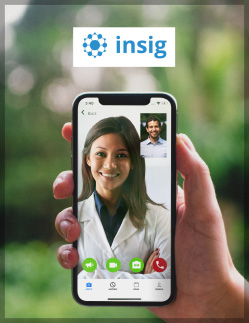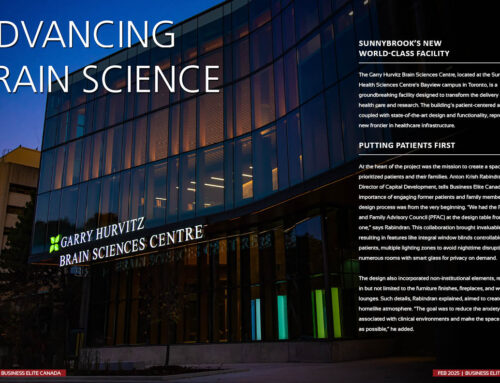Improving the delivery of care across canada
Technological advancements are making improvements in health care across the board, and a new app called Insig is propelling medical charting automation and virtual care into a new era, one that will save doctors and patients valuable time in accessing care.
In 2015, Matthew Mazzuca and David Del Balso took up the challenge to create a support tool for doctors, nurses, and health care practitioners. The two men, whose combined expertise in engineering, computing, and commerce led them to be chosen for an The Next 36 (an initiative which identifies and trains promising Canadian entrepreneurs), were interested in creating an application that could affect change in the medical space.
The result is Insig, a virtual clinic platform which allows patients to access a doctor from anywhere via online video, phone, or IM.
As with most successful enterprises, Insig wasn’t hatched fully formed, but rather evolved from previous ideas. Mazzuca and Del Balso were initially interested in creating a diagnostic application based on the data analysis of 3 million anonymous patients. Patients would answer increasingly specific questions, and the app would zero in on potential diagnoses. Although the app performed well, most health care providers showed hesitancy in off-loading actual diagnosing. However, during the process the pair gained invaluable insight into how the app could affect the daily routine and administration of a medical office or clinic—for instance, reducing the amount of time, 25 to 40 per cent of time on average, doctors spend collecting and charting patient information.
“We noticed something extremely novel,” says Mazzuca, “that in every single office, the doctors, nurses, and staff were all writing notes for the patient. We realized that we could collect information from the patient, and automate a variety of administrative tasks that happen in the clinic.”
From there, the team consulted with various medical groups and saw a huge potential for a virtual health care assistant to improve the level of efficiency and effectiveness in the health care system. In practise, Insig allows the highly skilled men and women in health care to use their time more effectively, and allow patients to receive care more efficiently.
“As we began growing the platform and serving more practitioners, we collected a variety of statistics and noticed how powerful the efficiencies are—we’re saving them 80 per cent of their overall documentation time,” says Del Balso.
Insig was designed as an extension to the brick and mortar of a clinic, allowing for easier patient interaction and processing. “To sum it all up, we built a virtual medical assistant to drive efficiencies in patient care, focusing on medical note automation and virtual care,” says Del Balso.
Since its launch in April 2016, hundreds of doctors and health care practitioners across the country have enjoyed Insig’s benefits, using suddenly freed-up hours for other aspects of their practises. Feedback has been “dramatic”, says Mazzuca.
“I love that Insig captures the story of the patient and provides me with a nuanced history,” says Dr. Abhishek Raut, Family Medicine. “This in turn means I can provide more comprehensive care while actually saving time. Our clinic is now able to see more patients with higher satisfaction.”
Insig creates efficiencies on both sides of patient care. For something routine such as a prescription renewal, sick note, or ongoing monitoring, Insig allows patients to schedule and appointment and see a doctor from their home.
Family Doctor Jean Oosthuizen says Insig “greatly improves compliance with therapy, and saves time,” adding “Insig now allows my patients direct input in the process of creating their medical record. They feel engaged and empowered, and become partners in their medical care.”
www.insig.ca







